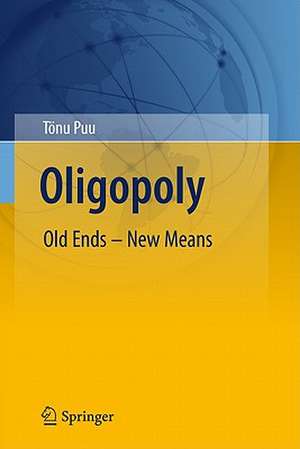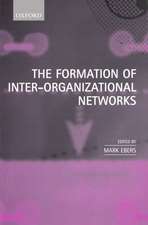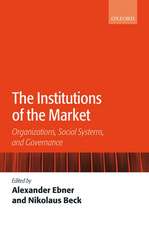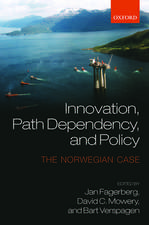Oligopoly: Old Ends - New Means
Autor Tönu Puuen Limba Engleză Hardback – 2 dec 2010
| Toate formatele și edițiile | Preț | Express |
|---|---|---|
| Paperback (1) | 635.01 lei 6-8 săpt. | |
| Springer Berlin, Heidelberg – 14 oct 2014 | 635.01 lei 6-8 săpt. | |
| Hardback (1) | 641.03 lei 6-8 săpt. | |
| Springer Berlin, Heidelberg – 2 dec 2010 | 641.03 lei 6-8 săpt. |
Preț: 641.03 lei
Preț vechi: 754.15 lei
-15% Nou
Puncte Express: 962
Preț estimativ în valută:
122.67€ • 131.17$ • 102.27£
122.67€ • 131.17$ • 102.27£
Carte tipărită la comandă
Livrare economică 18 aprilie-02 mai
Preluare comenzi: 021 569.72.76
Specificații
ISBN-13: 9783642159633
ISBN-10: 364215963X
Pagini: 170
Ilustrații: IX, 172 p.
Dimensiuni: 155 x 235 x 20 mm
Greutate: 0.44 kg
Ediția:2011
Editura: Springer Berlin, Heidelberg
Colecția Springer
Locul publicării:Berlin, Heidelberg, Germany
ISBN-10: 364215963X
Pagini: 170
Ilustrații: IX, 172 p.
Dimensiuni: 155 x 235 x 20 mm
Greutate: 0.44 kg
Ediția:2011
Editura: Springer Berlin, Heidelberg
Colecția Springer
Locul publicării:Berlin, Heidelberg, Germany
Public țintă
ResearchCuprins
Introduction.- Cournot Oligopoly.- Duopoly and Complex Dynamics.- Stackelberg Leadership.- Capacity Limits.- Multistability.- The Hotelling Paradox.
Textul de pe ultima copertă
The book focuses classical oligopoly theory as developed in 1840-1940. By the end of this period oligopoly came under the spell of game theory in its probabilistic equilibrium format. Work by Cournot, von Stackelberg, Palander, and Hotelling, causal and dynamic in essence, but ignored, is reconsidered in the light of modern dynamics using topology and numerics. As particular features, von Stackelberg leadership is included in the dynamic Cournot model, the Hotelling problem is solved with elastic demand, thus skipping the absurd idea of quadratic transportation costs. Further, it is shown that the celebrated destabilisation of Cournot equilibrium under increased competition is due to mistakenly assuming constant returns, and that the whole idea of rational expectations is untenable in dynamic oligopoly. Early original ideas in oligopoly theory, such as coexistence and multiplicity of attractors are focused again after many undeserved decades of oblivion.
Caracteristici
There exists no other book reconsidering oligopoly theory in its heyday in view of the new dynamics including exotic phenomena such as chaos There is ample computer graphics to illustrate all important issues The book has a through-going relation to classical oligopoly theory as it developed in history Includes supplementary material: sn.pub/extras


















